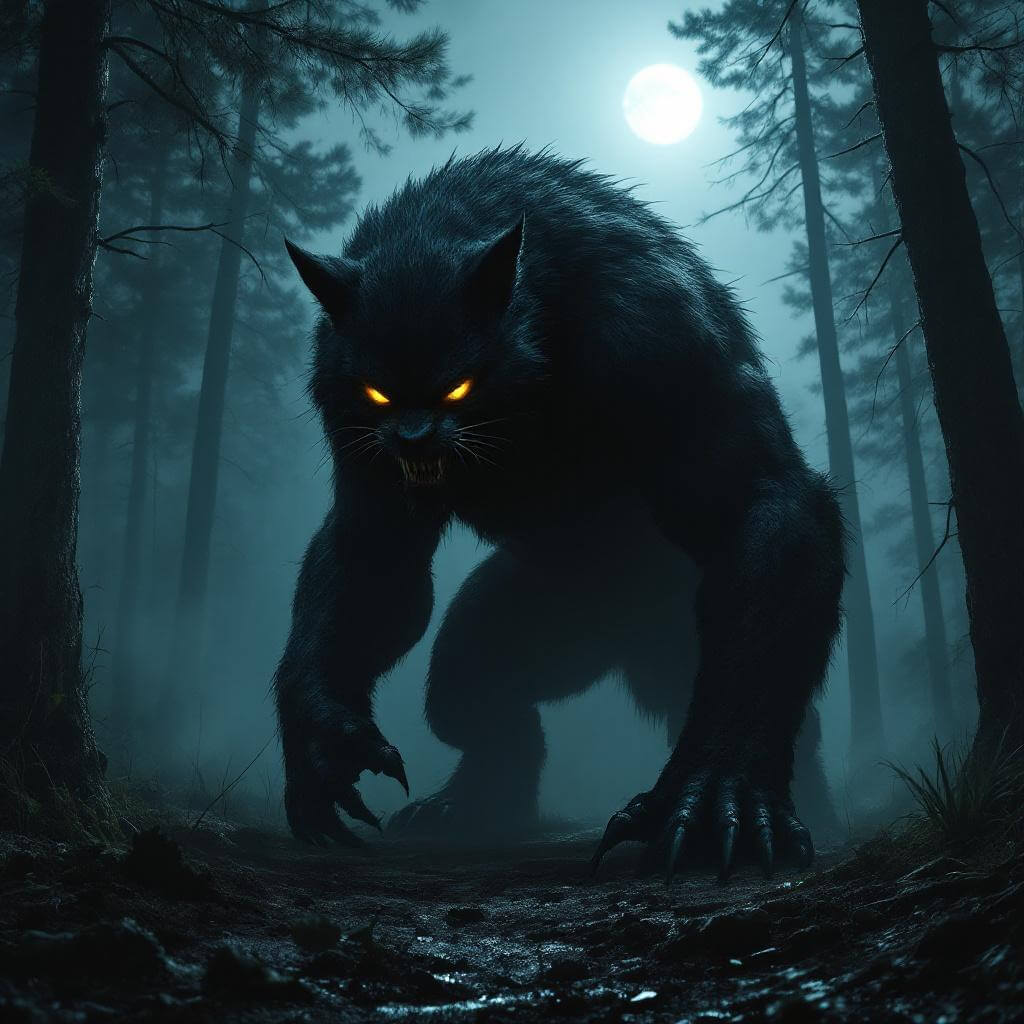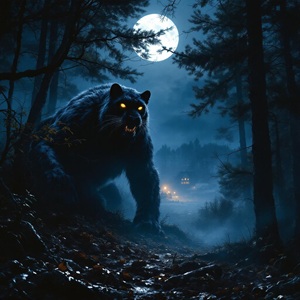The Beast of Bladenboro is a really fascinating cryptid / predator case from Bladenboro, North Carolina. The small town of Bladenboro seems an unlikely setting for one of America’s most chilling cryptid tales. In the early 1950s, Bladenboro was the kind of place where everyone knew each other, farms stretched for miles, and the loudest nighttime sounds came from frogs, crickets, or the occasional hoot of an owl.
That quiet ended abruptly in the winter of 1953–1954, when something began killing animals in a manner so brutal and so bizarre that residents believed a supernatural predator was on the loose. The newspapers called it The Beast of Bladenboro, and over seventy years later, its legend still grips the imagination.

On the night of December 29, Mrs. C.E. Kinlaw, a Bladenboro resident, heard a sound outside her home that froze her in place. She later told reporters it was “like a woman screaming and a panther’s cry all at once.” The noise seemed to come from the swampy thicket just beyond her yard. When she told her husband, he dismissed it at first until other neighbors reported hearing the same sound in the nights that followed.
On December 31, two dogs belonging to a local man named Johnnie Vause were found dead. Their bodies bore strange marks: skulls crushed, ears chewed, and blood seemingly drained. Local police chief Roy Fores examined the remains and declared he had never seen anything like it. The first week of January 1954 turned fear into full-blown panic.
January 2nd, 1954
More reports came in of dead dogs, all killed in the same manner, their skulls crushed and blood missing. At least five dogs were found over these two days. Residents began locking their pets indoors at night.
January 3rd, 1954
A woman named Mrs. George Williamson claimed she saw the Beast behind her house. She described it as “about 90 to 100 pounds, resembling a panther, with a long tail and a face like a cat.” Later that same day, another resident, Luther Davis, found a half-grown dog killed and dragged into the woods.
Chief Fores told the press that the creature was likely a large bobcat or panther but even he admitted the wounds were unusual.
January 4th, 1954
The story broke in local newspapers. Headlines in the Bladen Journal and Fayetteville Observer used the term “Beast” for the first time. Reporters arrived in town, interviewing witnesses and photographing the crime scenes.
By January 5, word had spread beyond North Carolina. Newspapers in South Carolina, Virginia, and Georgia picked up the story, and soon hunters began pouring into Bladenboro.
The hunting parties were a mix of local men and curious thrill-seekers from out of state. They brought rifles, shotguns, pistols and even hounds to track the scent. At one point, as many as 500 armed hunters were roaming the swamps and woods, some forming organized search lines.
One hunter claimed to have spotted the Beast crouched in a clearing. He said it hissed and growled before darting away at an unnatural speed. Another group reported finding tracks about the size of a silver dollar, but they disappeared in the sandy soil.
During those first two weeks of January, Bladenboro lived in a state of siege. Parents forbade their children from walking to school alone. Farmers shut their barn doors tight before sundown. People kept their shotguns loaded and by the door. Residents reported hearing strange screams in the night, sometimes accompanied by the sound of something heavy moving through the brush.
One man described hearing “a blood-chilling cry, like a baby and a woman both screaming together.” The sound reportedly echoed through the pines and made even the hunting dogs whimper. The last major sighting during the original wave came around January 13, 1954, when a man named Spurgeon Davis claimed to have encountered the creature at close range. He described it as “about three feet long, with a bushy tail, weighing about 80 pounds, and looking like a bobcat but much bigger.”
Shortly afterward, the attacks stopped. There were no more dead dogs or goats, no more strange cries at night. Just as suddenly as it had appeared, the Beast was gone.
Theories — Natural, Exotic, and Supernatural
Theory 1: A Big Cat
The most logical explanation is that the Beast was a cougar or large bobcat. Cougars were thought extinct in the eastern U.S. by the 20th century, but sporadic sightings have been reported for decades. The paw prints, feline-like appearance, and strength all fit except for the alleged “blood draining.”
Theory 2: An Escaped Exotic
Some suggest the Beast may have been a leopard, jaguarundi, or other exotic feline that escaped from captivity. In the 1950s, laws regulating exotic pets were lax, and roadside menageries were common.
Theory 3: A Canine Predator
Another idea is that the Beast was a wolf, wolf-dog hybrid, or unusually large feral dog. However, the way the kills were carried out particularly the crushed skulls is more consistent with big cats.
Theory 4: A Vampire-like Cryptid
The strangest detail is the blood-draining claim. This has led to comparisons with the Chupacabra, a cryptid from Latin America known for livestock attacks. Could the Beast be a regional variation?
Theory 5: Mass Hysteria
Some folklorists believe the Beast may have been an ordinary predator a bobcat, coyote, or even several animals magnified by rumor, fear, and sensationalist reporting. Once the “blood-sucking monster” narrative took hold, every unexplained noise or shadow became evidence.
Though the 1954 wave was the most famous, reports never completely stopped.
1970s: Farmers in Bladen and Columbus Counties reported mysterious livestock killings.
2004: A woman claimed to have seen a cougar-sized feline cross the road near Bladenboro.
2014: Several goats were found dead, drained of blood. Locals immediately revived talk of the Beast’s return.
2020s: Occasional reports still surface of large cat-like animals in the region, though none have been proven.



Jay W
There’s still lots of swamp land for something, or groups of something to hide in.